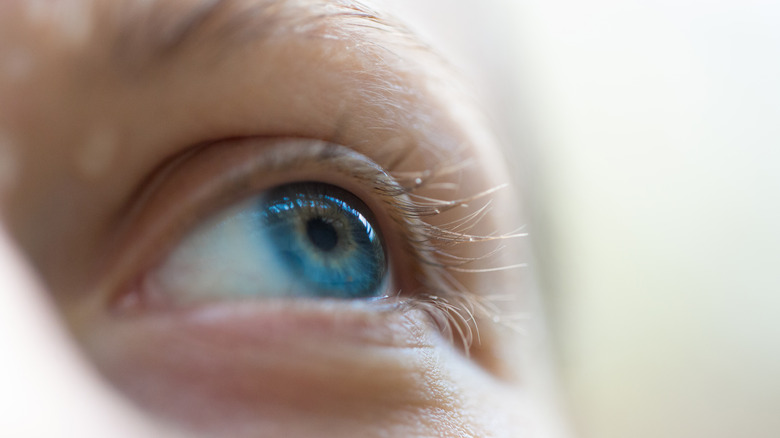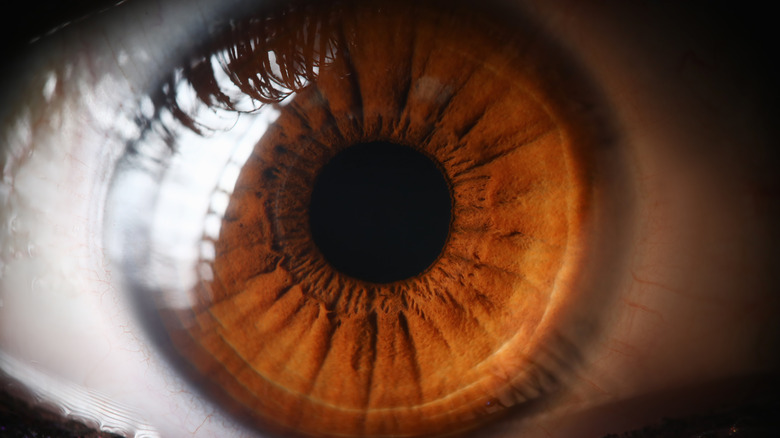Why Some People's Eyes Open When They Die
Most of the time, research shows that people tend to have closed eyes when they die. This was the case in a 2009 study published in the Indian Journal of Palliative Care, in which researchers documented the state of patients' eyelids in 100 consecutive hospice deaths. 63% displayed closed eyelids at death, while 37% had their eyelids open upon dying. The researchers described this occurrence as bilateral ptosis with partial eye closure. In other words, both eyelids had been drooping but were not completely closed upon death.
The study team also factored in health status in their research by examining patients who had been diagnosed with various types of cancers compared to those who were cancer-free. The researchers concluded that incomplete eye closure (both before and after death) was commonly associated with cancer-related deaths. They further cited that central nervous system tumors and liver disease-related brain dysfunction appeared to increase one's likelihood of bilateral ptosis upon death. However, are these health conditions the only explanation for why some people's eyes remain open when they die?
Open eyelids in cases of brain death
As we die and our bodily functions slow, there are a number of things that may affect the positioning of the eyelids at death. For instance, experts at Love to Know note that our eye muscles begin to relax, which can cause one's eyelids to fall open, only to then stiffen as we die. This may result in the eyelids staying open upon death. Weakened muscle tone and the use of certain medications may also play a role.
While rare, some studies show that opening of the eyelids may also occur in some cases of patient brain death. Researchers from a 2022 case study published in the scientific journal Clinical Neurophysiology Practice outlined the case of a 43-year-old hospitalized woman who had been ruled brain dead. However, she displayed slow, partial opening of both eyelids upon painful nipple stimulation. Thus, the brain death diagnosis was paused to evaluate for other signs of brainstem function. While the study findings ultimately deemed the patient's eyelid opening to have been a reflex, the researchers emphasized the importance of monitoring for cerebral blood flow in the event of such a phenomenon before declaring patient brain death.
What the eyes may be able to teach us after death
As it turns out, the eyes may still have something to teach us following death. Scientists from a 2022 study published in Nature found that in removing the eyes of deceased mice, they were able to restore light-detection activity in the retinas for up to three hours following death by reviving them with oxygen and a normal pH balance (via Scripps Research). This same kind of activity was identified in autopsied human retinas that had been removed as many as five hours post-mortem.
Co-corresponding author Dr. Anne Hanneken commented on the findings, telling Scripps Research, "We were essentially able to get the cells to 'wake up' and talk to each other after death." Dr. Hanneken explained that this work had been years in the making through a series of trial and error. "We spent years getting no light signals at all from human eyes. It was perseverance through lots of failures that eventually resulted in this success, which we think will lead to a transformative understanding of human eyesight."



